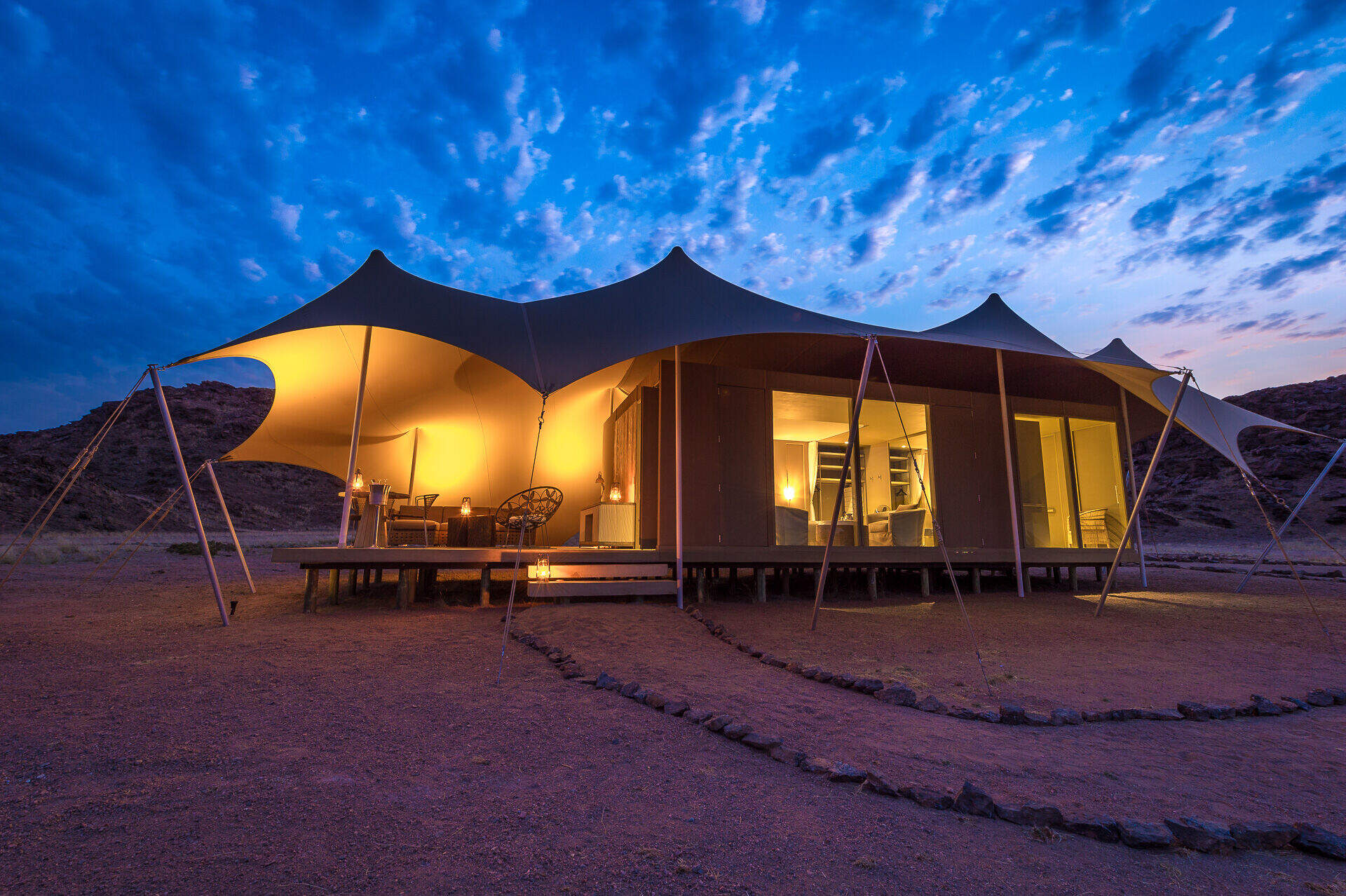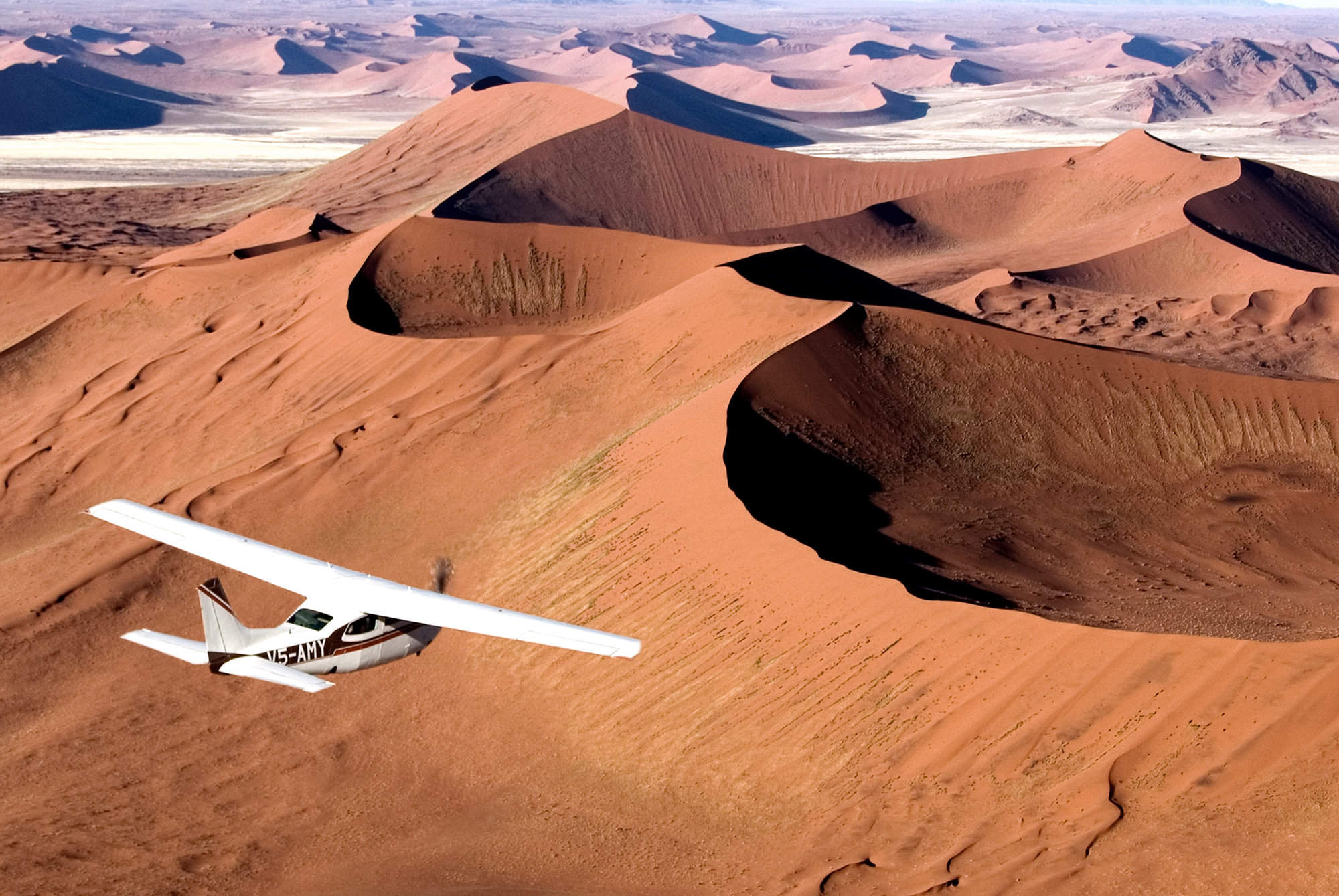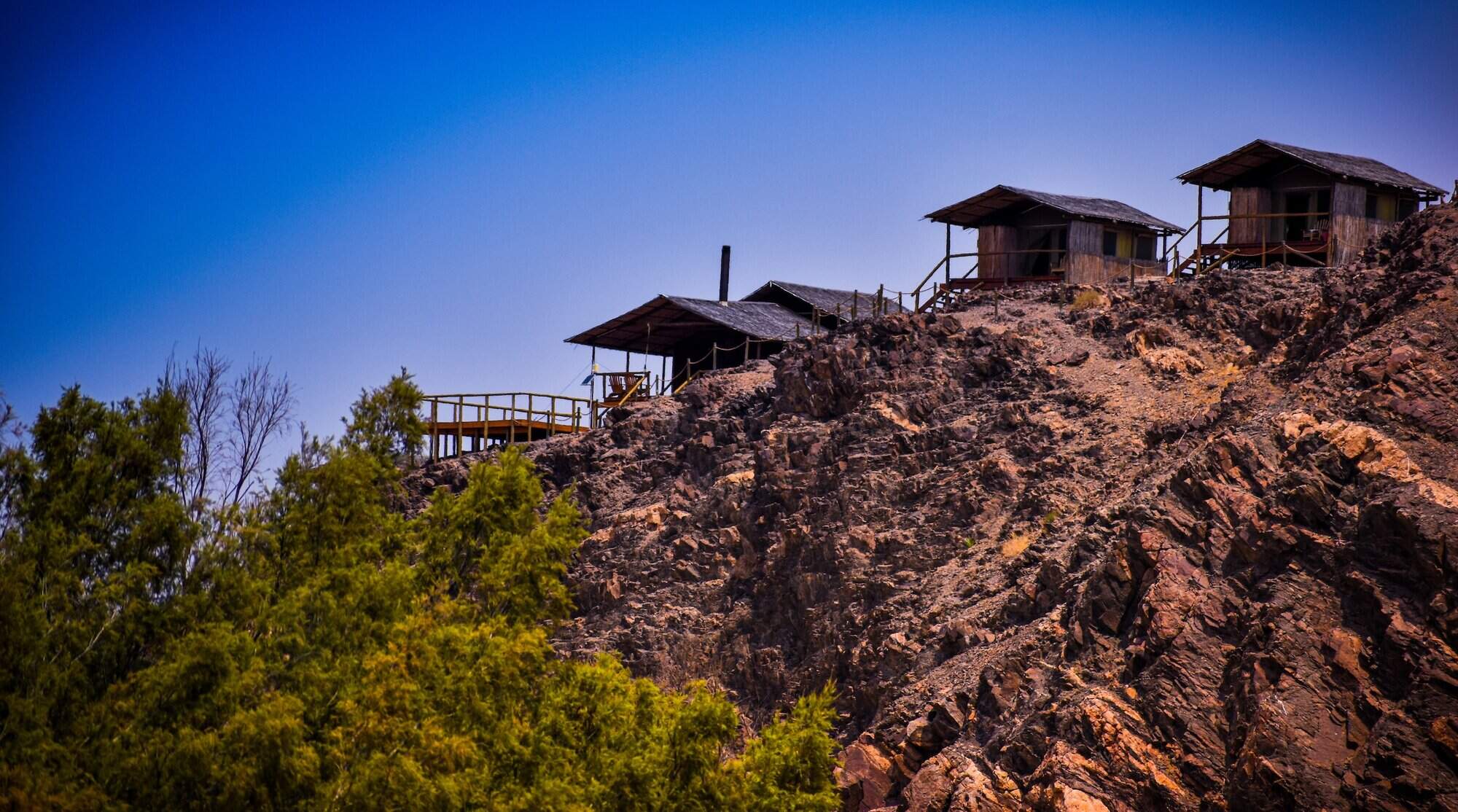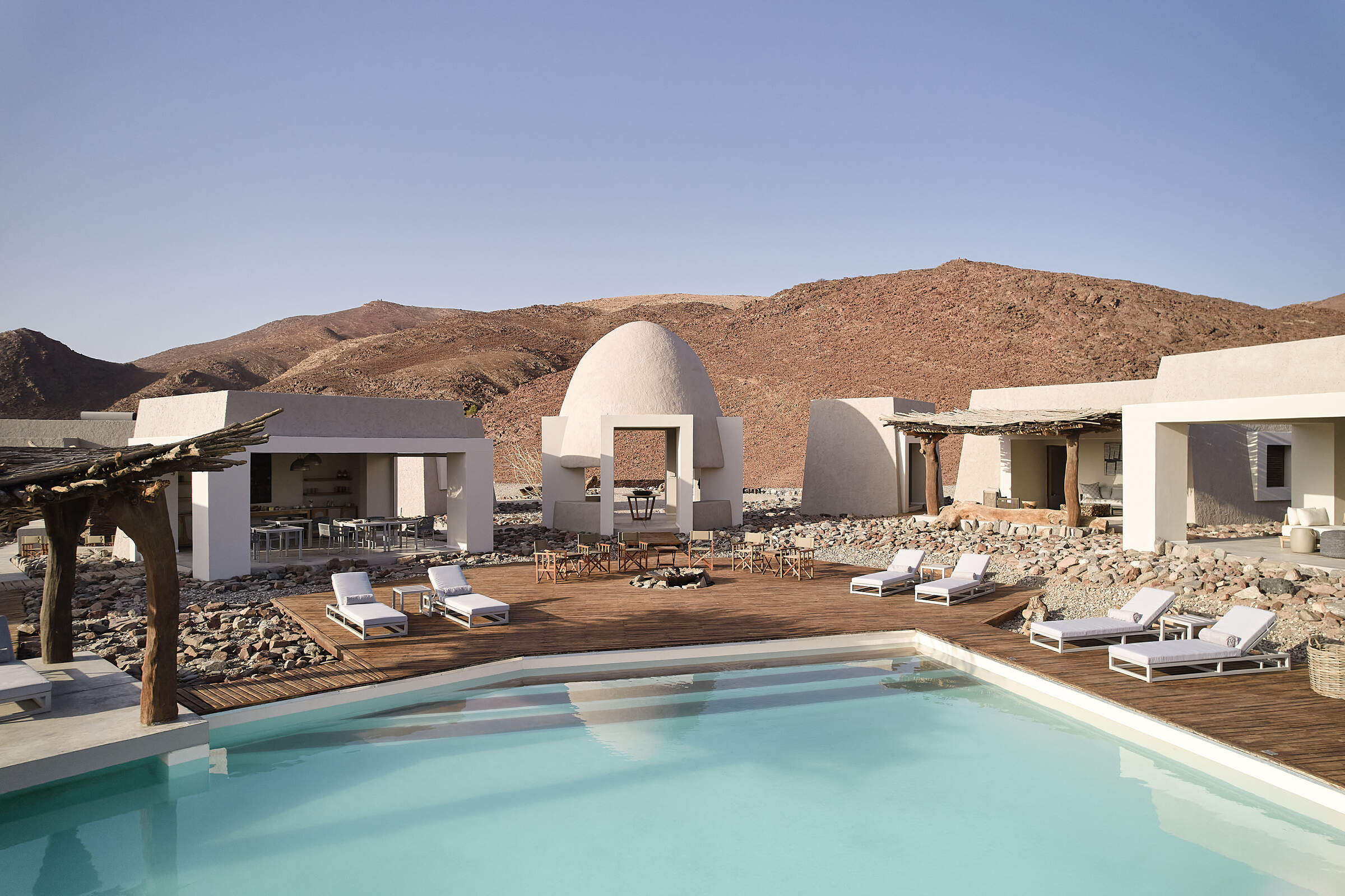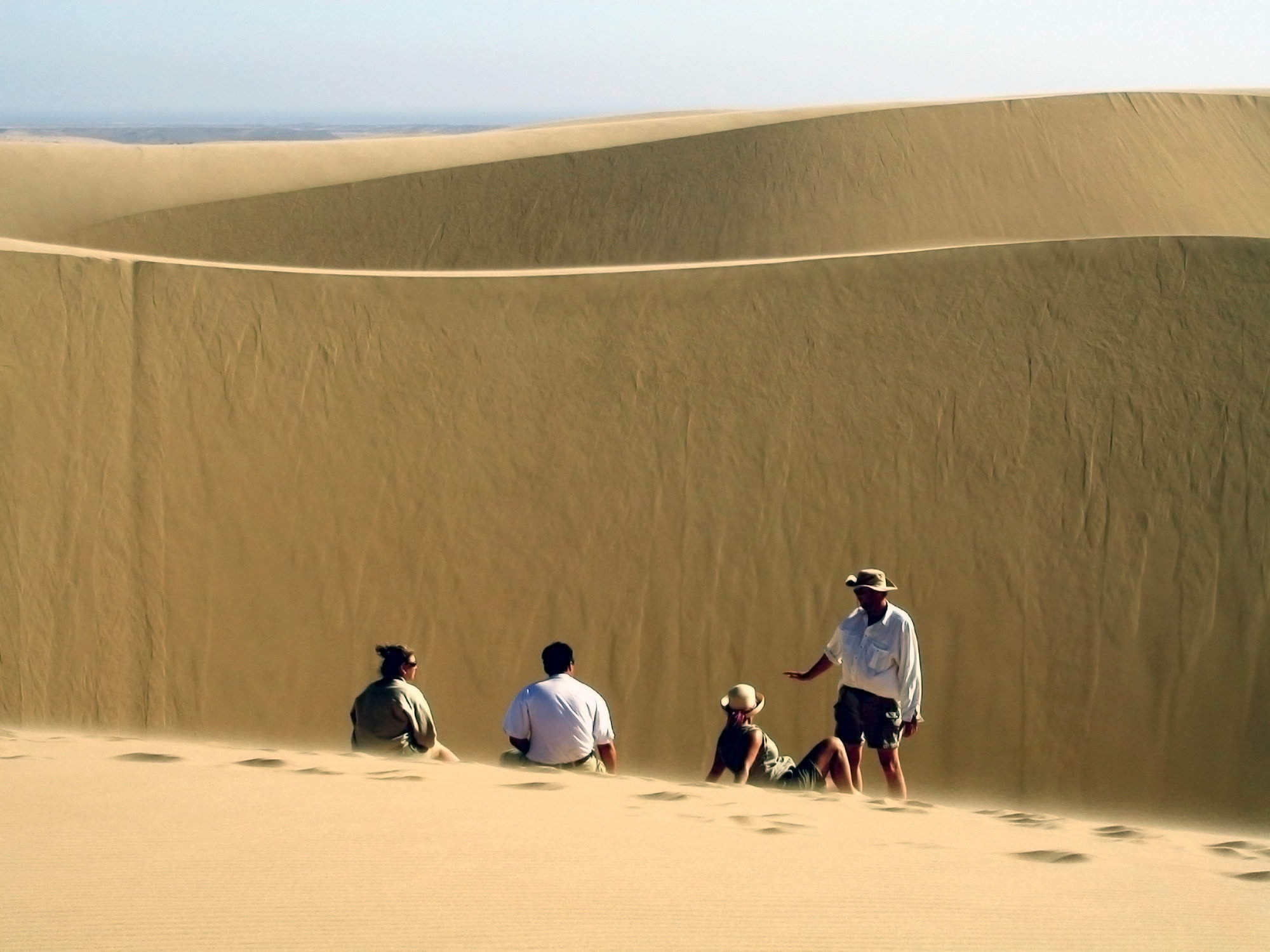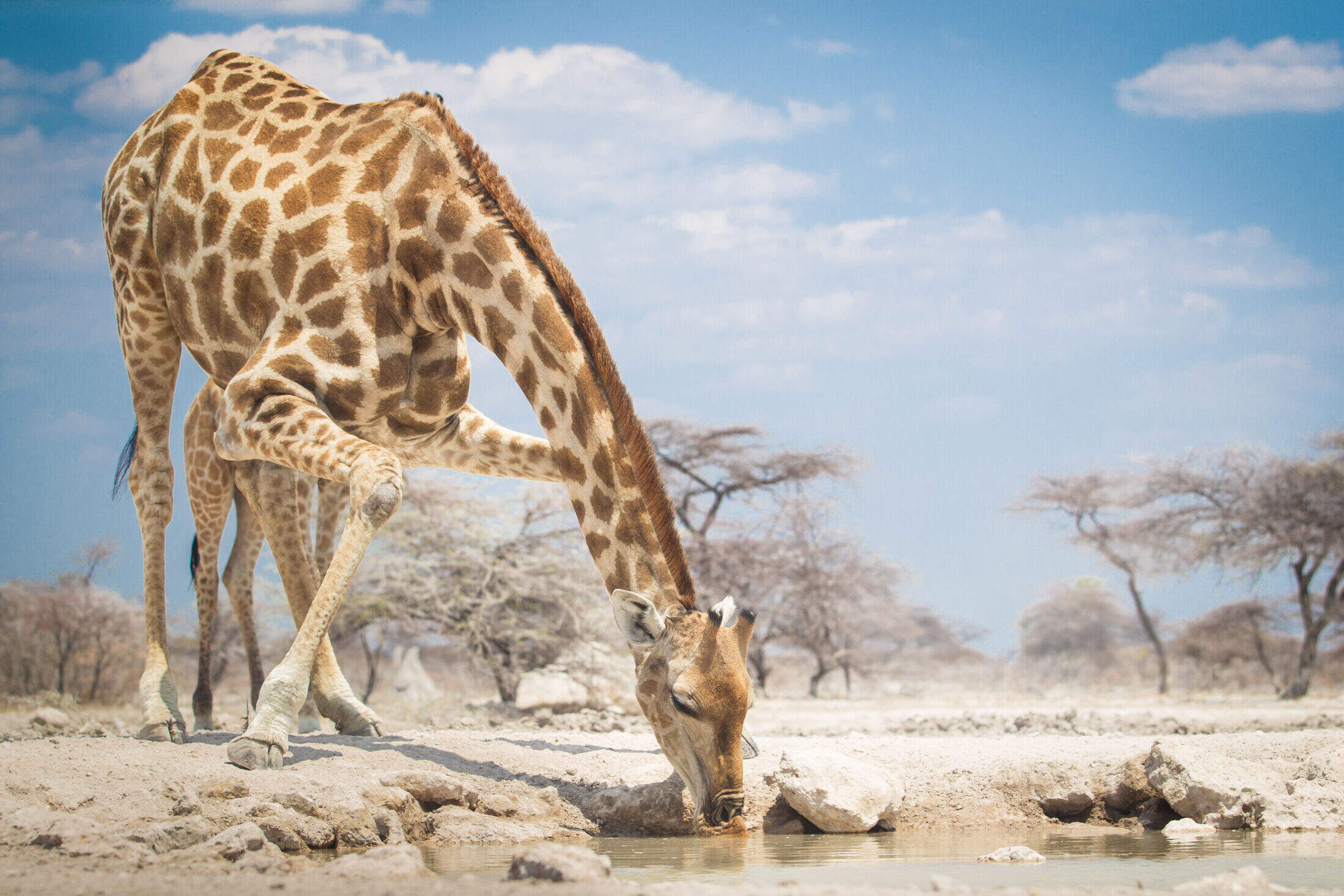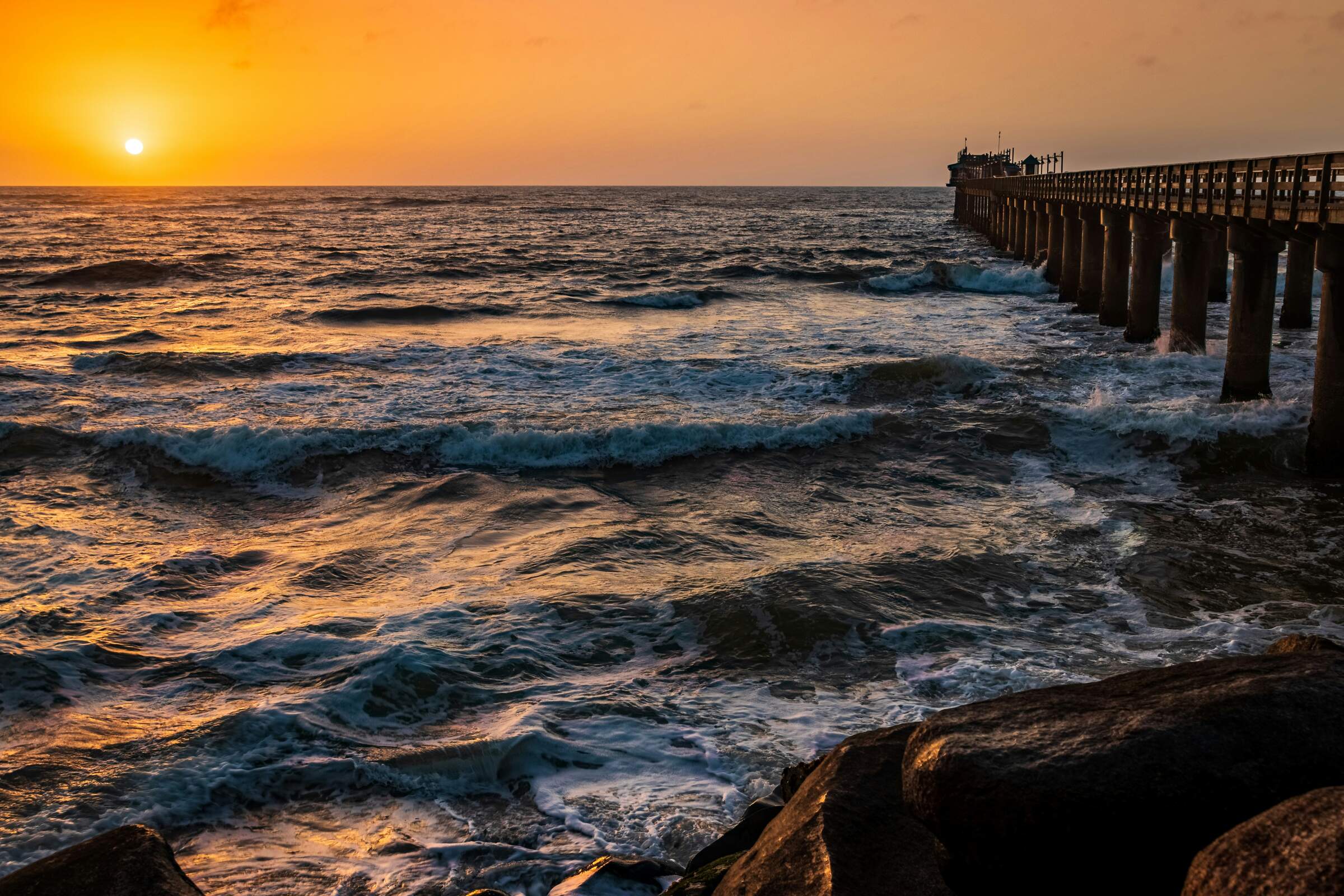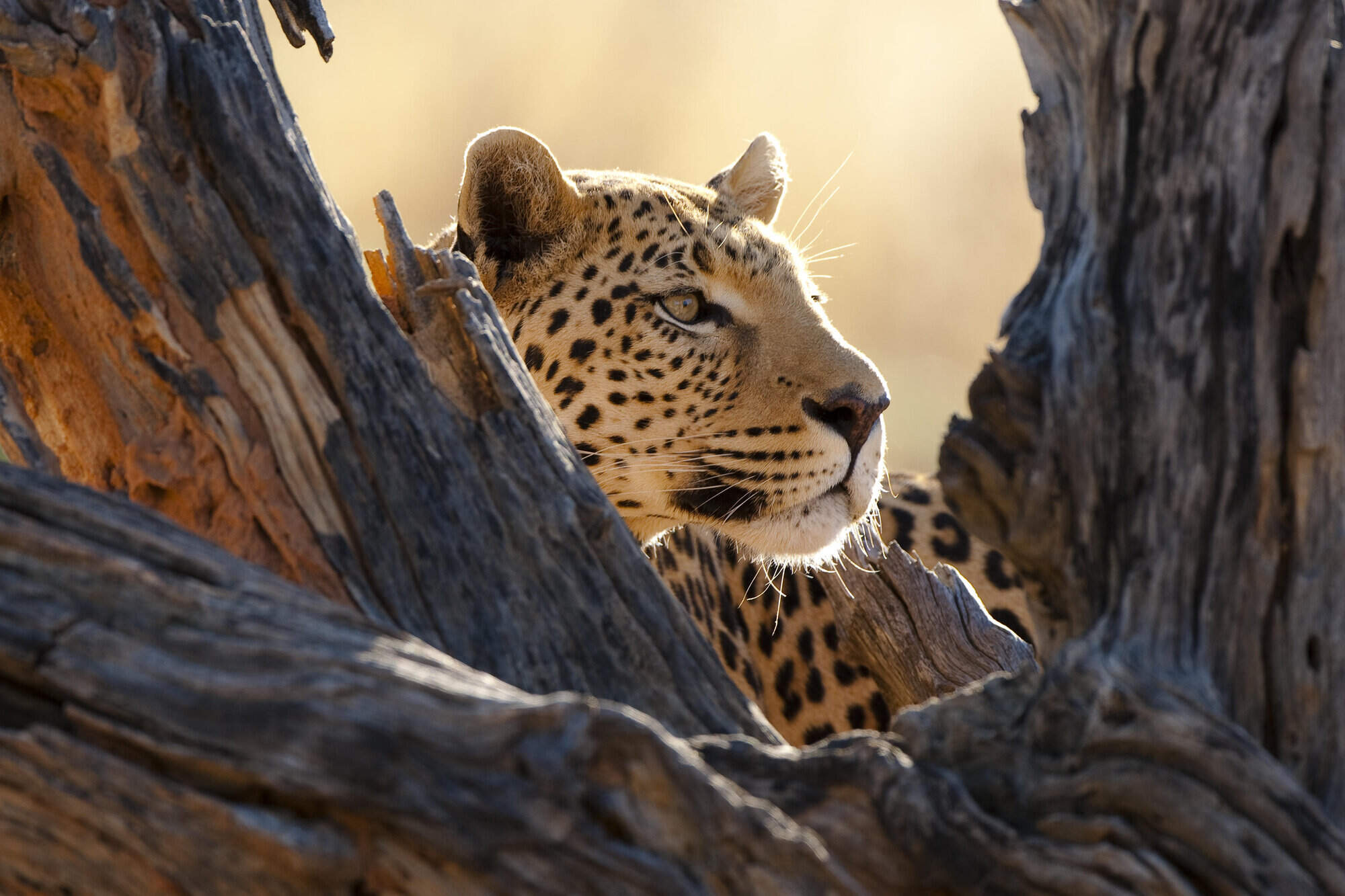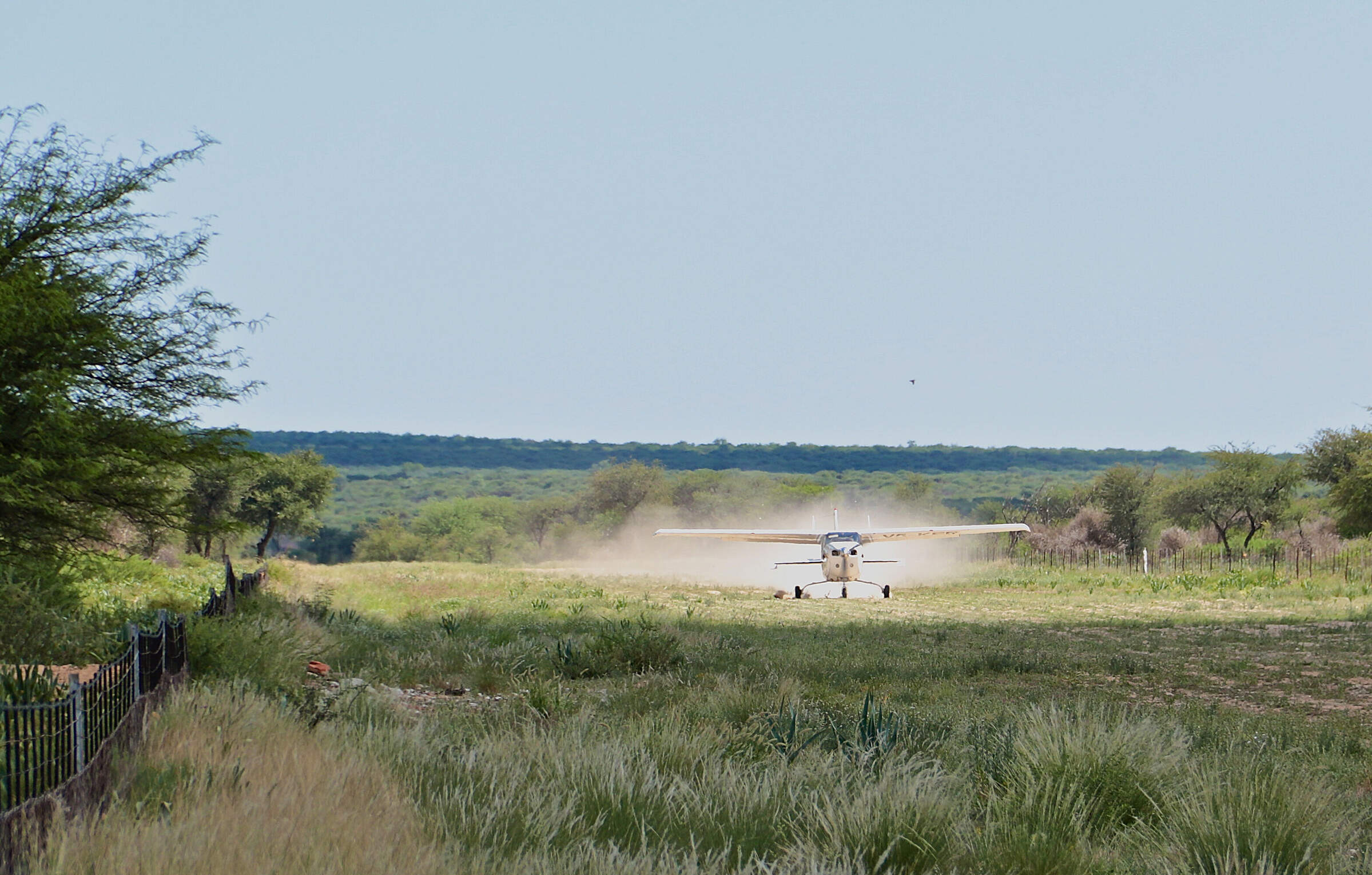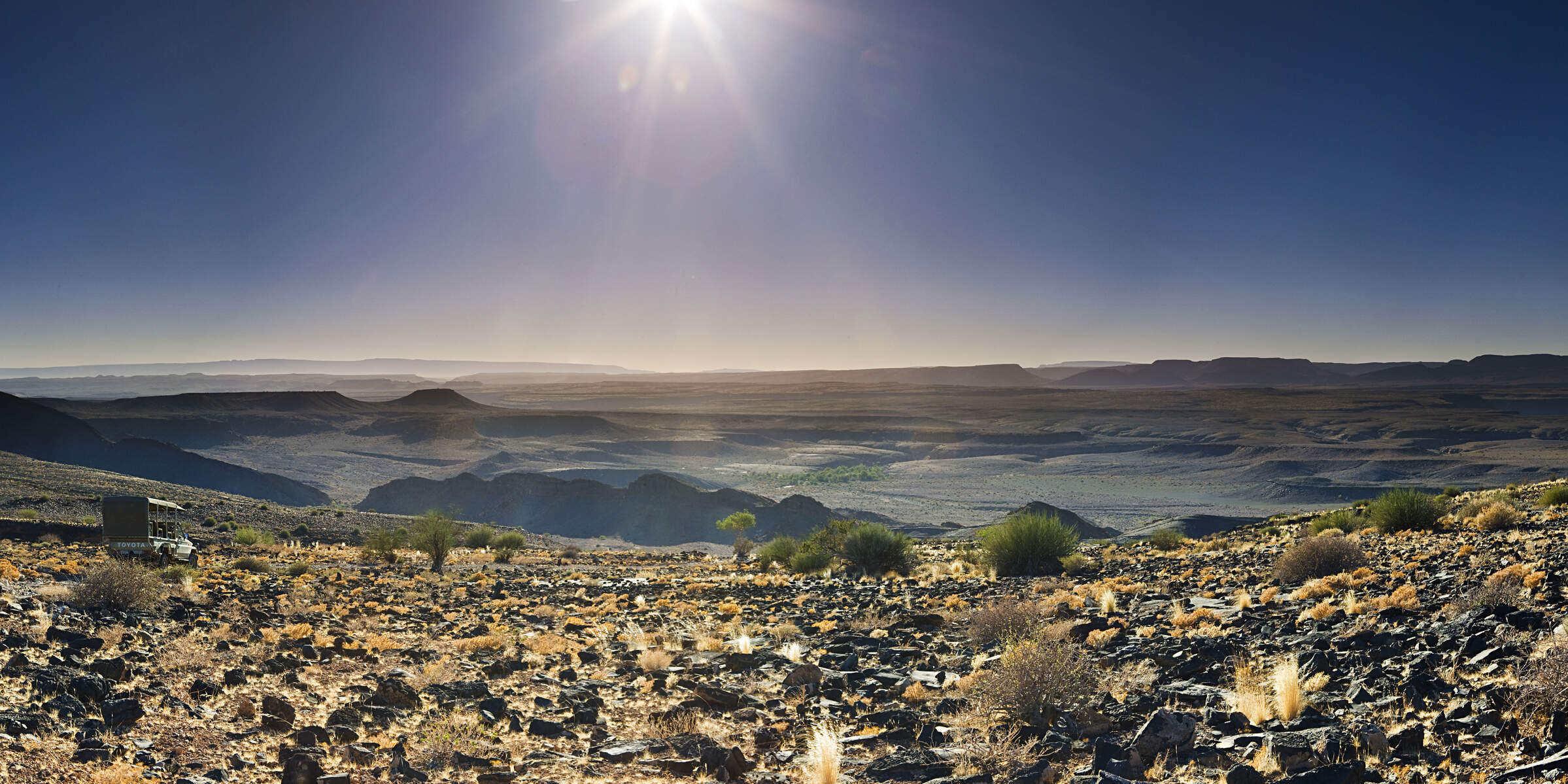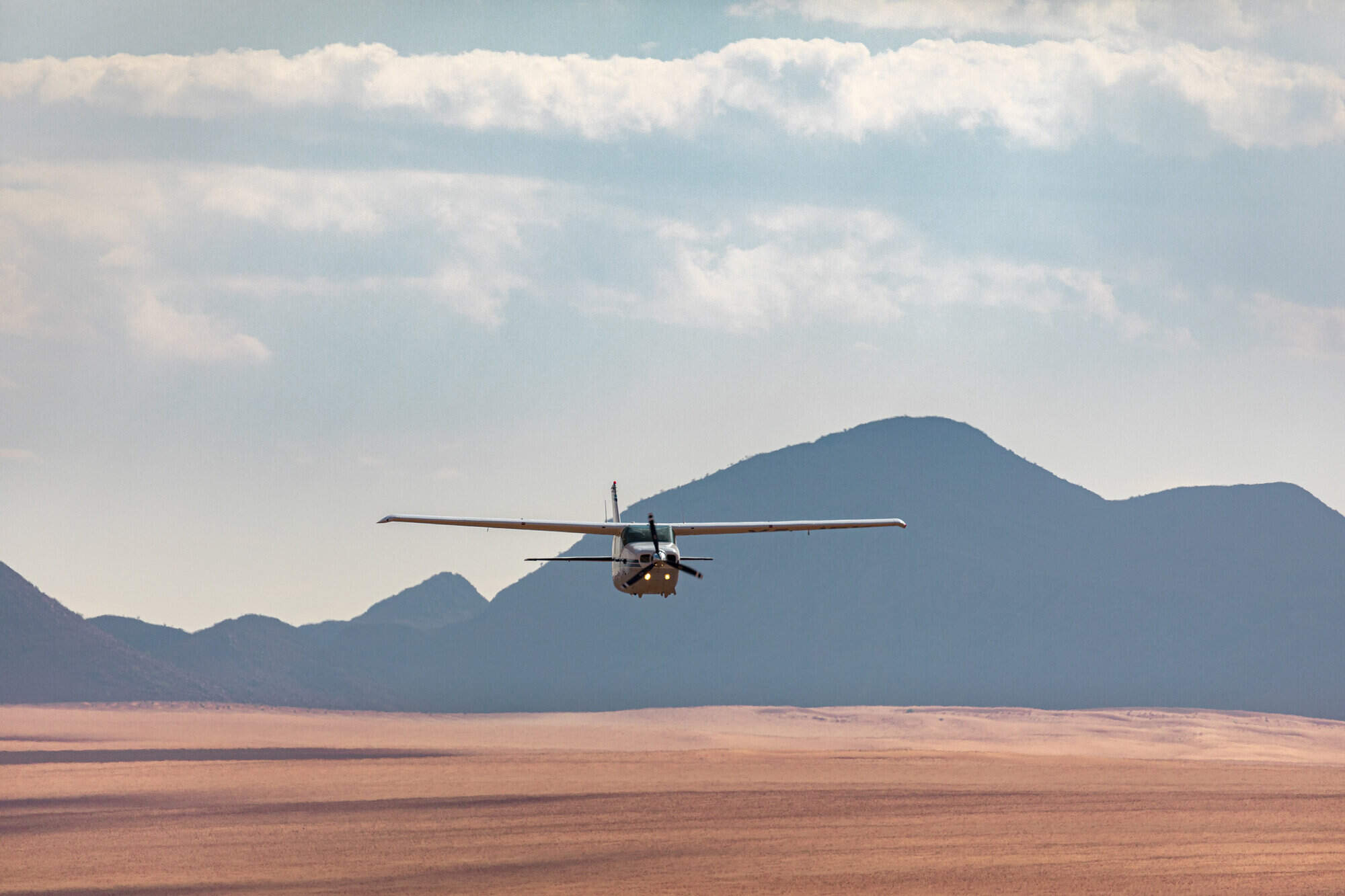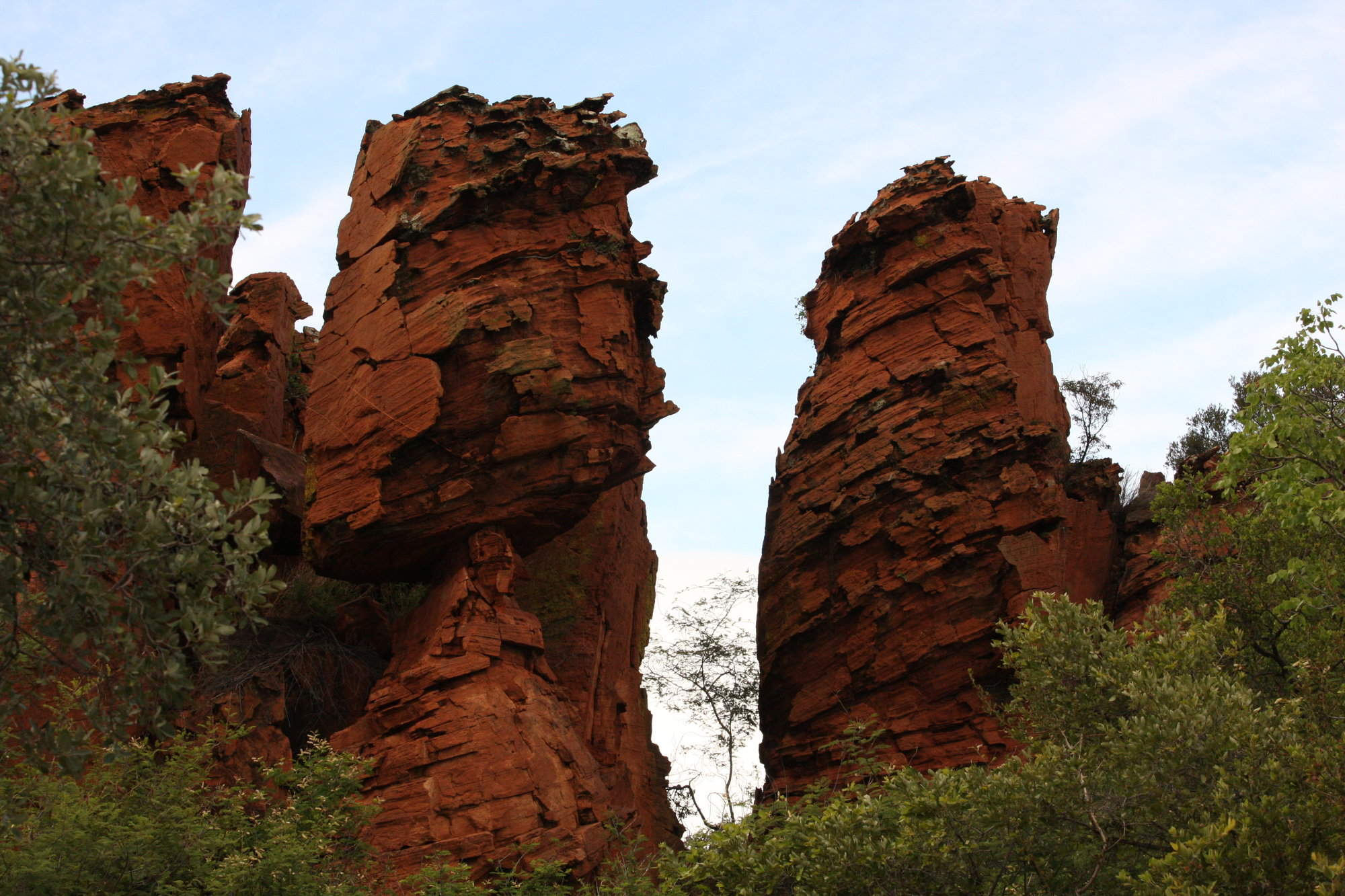Serra Cafema: Our full report
Serra Cafema stands as an oasis of luxury in perhaps Namibia's most remote wilderness.
nestled at the extreme north-western tip where the expansive Hartmann Valley culminates. This luxurious lodge nestles in a lush belt of riverine forest beside the Kunene River, overlooking the mountains of Angola’s Iona National Park beyond. The juxtaposition of this vibrant river against the arid desert and rugged mountains creates an enchanting and unique setting.Embarking on the journey to Serra Cafema is an adventure in itself. Light aircraft flights from Windhoek to the Hartmann Valley airstrip take three to four hours over the undulating hills of the Central Highlands, weaving through valleys, mountains of Damaraland and on to the grassy plains and dunes of the Marienfluss. The flight often includes a refueling stop at either Doro Nawas or perhaps Hoanib Skeleton Coast Camp. From the airstrip, it’s a four-hour drive to the camp through surreal, otherworldly landscapes. It is hard to put into words just how remote this camp feels.
Due to its extreme remoteness, visits to Serra Cafema are infrequent compared to more accessible camps in Namibia.
Serra Cafema, strategically built on the riverbanks to mitigate high summer temperatures, boasts eight canvas and thatch suites perched on wooden decks with unparalleled river views. The suites feature large twin or king-size beds adorned with luxurious bedding, draped in mosquito nets, and equipped with ceiling fans for comfort during the hotter months (October to February). Each suite includes a tea and coffee station, a spacious lounge area, and a writing desk with views through large glass windows over a private, wrap-around deck facing the river and the mountains of Angola. The ensuite bathroom offers his and hers basins, indoor and outdoor showers, and a separate toilet. The décor seamlessly blends rustic elegance with modern comfort, incorporating natural materials, locally sourced crafts, and earthy tones to create a warm and inviting atmosphere.
Connecting the suites are raised wooden walkways leading to the main area constructed with wood, glass, and thatch. Perched on the riverbank amid ancient riverine woodland, this central hub includes indoor and outdoor dining areas, a bar, a small library, and a small pool surrounded by lounges and parasols.
Serra Cafema offers a diverse range of activities that immerse travellers in the region's unique ecosystems. Guided nature walks, boat trips and nature drives provide an opportunity to explore this untouched wilderness and discover the fascinating flora and fauna that have adapted to the harsh desert environment. The camp's proximity to the river and surrounding desert provides excellent birdwatching opportunities, with a unique combination of avian species.
A visit to local Himba communities is a must, facilitated by the camp's close ties to the community, evident in the employment of local staff and support for a subsidised shop at the camp (the nearest town is hundreds of miles away). On our visit in 2018, we were humbled by the warm welcome and friendliness of the ladies who showed us a little of their way of life; few places offer such sensitive and genuine cultural encounters.
For the more adventurous, quad biking excursions over the vast expanse of the dunes offer a thrilling and immersive way to experience the stark beauty of the Namib Desert. (NB: It's essential that you read the Quadbike warning in the 'Health & Safety' section below for our comments on insurance issues regarding this activity.)
Our view
Serra Cafema harmoniously combines one of Namibia's most remote location with an exceptionally luxurious camp, creating a truly unique and almost magical destination. Whether exploring Martian landscapes, meeting the Himba tribespeople who call this harsh land home, or simply indulging in ultimate luxury, Serra Cafema offers arguably the ultimate escape from everyday life.
Geographics
- Location
- Skeleton Coast & Kaokoland, Namibia
- Ideal length of stay
- Three nights
- Directions
- Serra Cafema can only be accessed by light aircraft, usually from Windhoek or one of its sister camps such as Little Kulala, Damaraland Camp, Doro Nawas or Hoanib Skeleton Coast Camp. The nearest airstrip is a four-hour drive from camp.
- Accessible by
- Fly-and-Transfer
Food & drink
- Usual board basis
- Full Board & Activities
- Food quality
- With advanced notice the team here can cater to most dietary requirements.
- Dining style
- Individual Tables
- Dining locations
- Indoor and Outdoor Dining
- Further dining info, including room service
- Private dining options are available on request.
- Drinks included
- Most drinks, including house wine, local beers, soft drinks and water are included here.
Special interests
- Honeymoons
- For a magical and exclusive honeymoon in Namibia, Serra Cafema is a very special choice. The camp is one of the most remote in southern Africa, and combines rustic and luxury elements in a starkly beautiful and peaceful location.
- See ideas for Honeymoons in Namibia
- Birdwatching
- On the banks of the Kunene River, Serra Cafema is one of the most remote camps in Southern Africa. The river’s permanent water and accompanying vegetation provides sanctuary from the surrounding desert, making this a top spot for birdwatching in Namibia.
- See ideas for Birdwatching in Namibia
- Photography holidays
- Namibia abounds with otherworldly environments but the often Martian like landscapes around Serra Cafema are some of the most remote and photographic in Southern Africa.
- See ideas for Photography holidays in Namibia
- Cultural experiences
- Arguably Namibia’s most remote camp, Serra Cafema offers visits to traditional Himba villages. They’re authentic experiences; off the beaten track, away from most tourists, and conducted with great sensitivity. Learn about the lifestyle and customs of these semi-nomadic people.
- See ideas for Cultural experiences in Namibia
- Luxury
- Nestled in a thin strip of luxuriant palm-forest, Serra Cafema stands beside a linear oasis: one of the country’s two permanent rivers through the desert. This is Namibia at its most remote, yet with beautiful suites where velvety bedspreads and sumptuous leather armchairs exude luxury.
- See ideas for Luxury in Namibia
Children
- Attitude towards children
- Children aged 6 years and older are welcome at Serra Cafema
- Property’s age restrictions
- No children under 5 unless booked on an exclusive use basis.
- Special activities & services
- None
- Equipment
- None
- Generally recommended for children
- Given the remote location, raised walkways, proximity to the river and the adult feel of this camp it is best for older children.
Our travellers’ wildlife sightings from Serra Cafema
Since mid-2018, many of our travellers who stayed at Serra Cafema have kindly recorded their wildlife sightings and shared them with us. The results are below. Click an animal to see more, and here to see more on our methodology.

100% success

0% success

0% success

0% success

0% success

0% success

0% success

0% success
Communications
- Power supply notes
- There is a back-up generator.
- Communications
- WiFi is available here.
- TV & radio
- None
- Water supply
- Other
- Water supply notes
- All rooms are fully plumbed with hot and cold running water and flush toilets.
Sustainability

The signing of an agreement with Marienfluss Conse
It’s been over 15 years since the first joint venture agreement between Wilderness Safaris and Marienfluss Conservancy in Namibia to open Serra Cafema Camp was signed. Although the camp has been recently renovated, their partnership with the conservancy has not changed. The main reason behind is the camp’s choice to help create a thriving living environment for the semi-nomadic Himba people who inhabit a mosaic of villages in this vast stretch of wilderness.
The success of the agreement was certified through its renewal in 2017 for further ten years. Up-to-date direct benefits from Wilderness Safaris to the Marienfluss Conservancy include payment of bed-night fees to the Conservancy and local employment and skills transfer. Currently, 70% of Serra Cafema’s employees come from local areas. Himba people are assisted with transportation to the local clinic or hospital when needed, and funding to building a borehole for people and livestock has been provided. Employees benefit from a small shop for daily necessities, a transport service and a communication centre available for emergencies or to help staff keep in touch with their families as well as first aid supplies to help with minor injuries.
The camp has also contributed to the building of the first school in the Conservancy - Marienfluss School from Grade 0 to 7, with 70 students and six teachers. Children’s wellbeing is further taken care of by inviting them to participate in Children in the Wilderness camps.
See more great sustainability projects in Namibia
Health & safety
- Malarial protection recommended
- Yes
- Medical care
- There is an on-line doctor in Otjiwarongo who the staff can speak to if necessary, and the camp has emergency evacuation plans in place.
Quadbike warning: quad-biking is sometimes available as an activity from Serra Cafema. As with any potentially dangerous activity, it’s vital that you take responsibility for ensuring that you have adequate travel insurance prior to getting involved. Be aware that some insurances cover quad-bike activities only for bikes with lower engine ratings: check such clauses particularly carefully before you get on a bike. - Dangerous animals
- Moderate Risk
- Fire safety
- There are extinguishers in the suites and main areas
Activities
4WD Safari
Birdwatching
Boat trip
Cultural excursion
Guided walking safari
Night drive
Private activities
Quad-biking
Extras
- Disabled access
- On Request
- Laundry facilities
- Included
- Money
- There is a small digital safe in each suite
Other lodges in Skeleton Coast & Kaokoland
Alternative places to stay in this same area.











